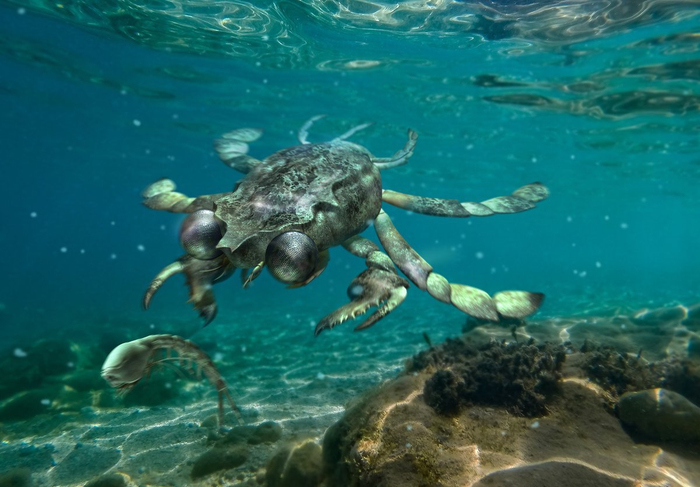
Secrets of a big-eyed crab fossil revealed
Eyes are important. They help animals find food and avoid becoming a meal themselves. Eyes also help animals scope out potential mates and watch out for rivals.
Looking into the eyes of a fossil can thus tell you a lot about how the creature once lived. Was the animal nocturnal or diurnal? An active hunter or shy and retiring? Unfortunately, however, eyes are rare fossils and scientists don’t often get an opportunity to look at them.
A research team spent years examining the eyes of a 95-million-year-old fossil crab, Callichimaera perplexa, found in the Colombian Andes. The crab was first described in 2019 by Harvard postdoctoral fellow Javier Luque. The fossil had preserved unusual elements of both the outer eye and internal structures.
In a new study led by Luque and scientists at Yale University, it is suggested that Callichomaera perplexa was a rare, active swimming predator. Much of this conclusion comes from examination of the eyes, which are quite large for those of an adult crab.
To make sure that they were in fact looking at an adult crab rather than an immature stage where eyes appear larger, Yale PhD candidate Kelsey Jenkins examined more than 1,000 crab specimens, both living and extinct. The research involved looking at crabs at different stages of development to finally determine that indeed, Callichomaera perplexa was an adult with exceptionally large eyes.
“Having such big and unprotected eyes implies that they were exposed at all times, plus eyes that big impose a huge investment of energy and resources to maintain them. Thus, this animal must have relied considerably on vision,” said Luque.
“If something has eyes this big, they’re definitely very highly visual. This is in stark contrast to crabs with tiny, vestigial eyes where they may only be 1 to 3% of the animal’s body size,” said Jenkins.
Further research showed that the crab had high visual acuity, comparable to other predators such as dragonflies and mantis shrimp. Its vision was adapted to high light environments, meaning the animal was probably most actively hunting during the day.
“Even though it’s the cutest, smallest crab, the big eyes of Callichimaera and its overall body form with unusually large oar-like legs indicate that it might have been a fierce, swimming predator, rather than a bottom-crawler as most crabs are,” said Luque.
Image Credit: Masato Hattori
—
By Zach Fitzner, Earth.com Staff Writer













